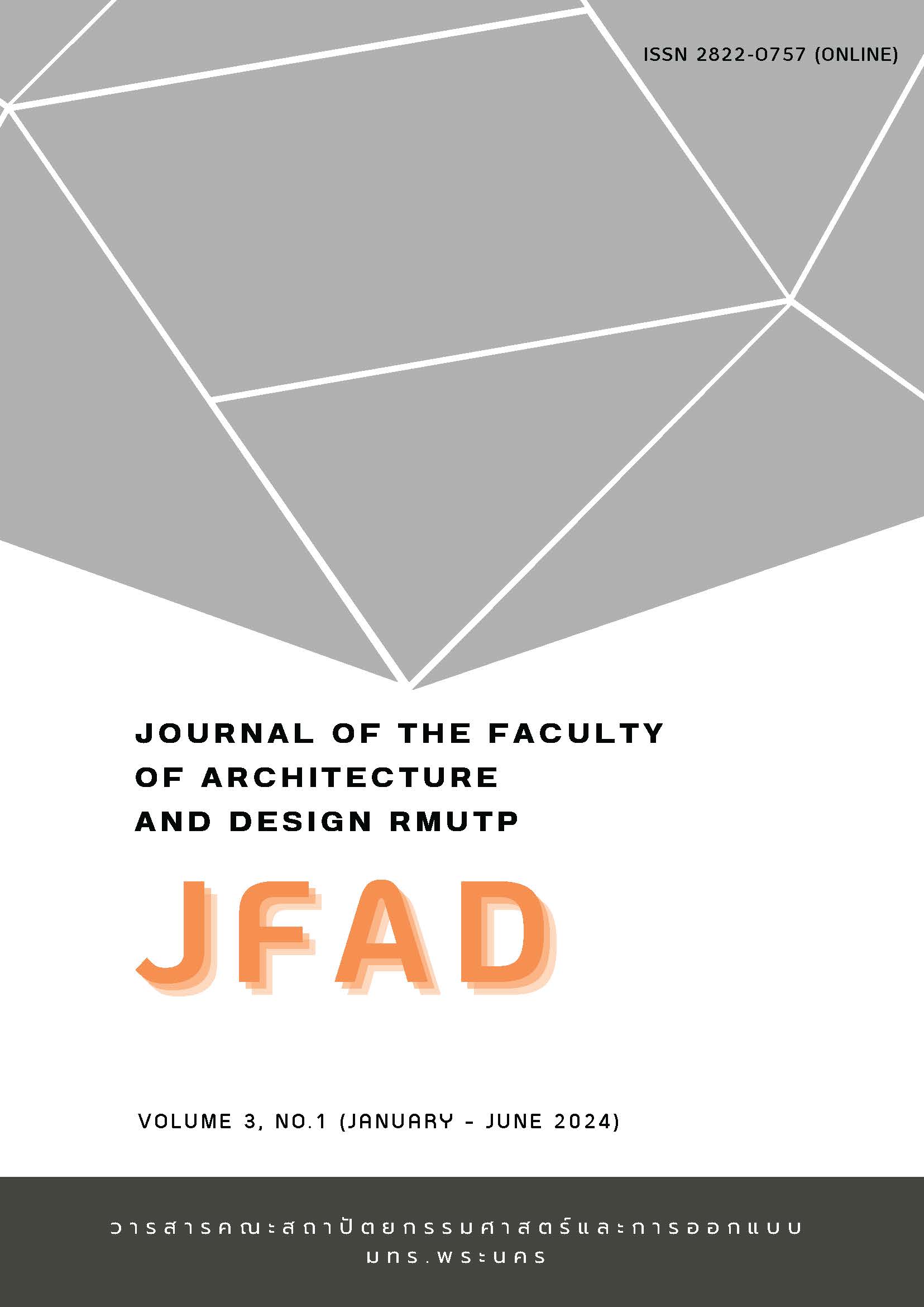Post-occupancy Evaluation of the Low-income Residential Community Case Study: Ban Pra Cha Rat Rim klong San Chao Poh SomBoon
Main Article Content
Abstract
The San Chao Por Somboon Community was originally one of the low-income communities that encroached on Bangkok's canals. Currently, the entire community has been demolished and new houses have been built on The Treasury Department’s land. On the principle of Post-occupancy Evaluation (POE), the research objective is to evaluate after-use residential buildings in low-income communities. The research instrument consisted of a structured interview, questionnaires and in-depth interviews. These Data were collected with a sample of 200 residents. Data were analyzed by averaging and content analysis. Research has found that the overall attitude of residents is positive towards the project as it provides standardized housing, legal, has a house number and basic utilities. Residents feel that the house is beautiful and appropriate for the construction price. Most of the time is spent in the bedroom and living room. Feel that the surrounding area has the appropriate width and height. Suitable for the way of life of the community. Feel that there is beauty and beauty worth looking at. Most of the time is spent near the waterfront and sports grounds. However, the disadvantage is that villagers have an additional burden from having to make monthly home payments. The usable space inside the house is less than before because the house has been allocated according to the number of residents and the house is subject to building laws.
Article Details

This work is licensed under a Creative Commons Attribution-NonCommercial-NoDerivatives 4.0 International License.
Copyright (c) 2023 : Faculty of Architecture and Design, Rajamangala University of Technology Phra Nakhon
References
กองนโยบายและแผนงาน. (2561). สถิติข้อมูลชุมชนในเขตกรุงเทพมหานคร. สำนักการวางผังและพัฒนาเมือง กรุงเทพมหานคร.
สถาบันพัฒนาองค์กรชุมชน. (2560). ถอด 11 กระบวนท่า การพัฒนาที่อยู่อาศัยชุมชนริมคลอง ชุมชน “ศาลเจ้าพ่อสมบุญ 54”. ศูนย์ปฏิบัติการที่อยู่อาศัยชุมชนริมคลอง (ศปก.ทชค).
สถาบันพัฒนาองค์กรชุมชน. (2558). โครงการบ้านมั่งคง การพัฒนาที่อยู่อาศัยโดยองค์กรชุมชนและท้องถิ่น. กระทรวงการพัฒนาสังคมและความมั่นคงของมนุษย์.
มธุลีห์ โยคี และ ประพนธ์ สหพัฒนา. (2564). ความสำเร็จและความล้มเหลวของนโยบาย “โครงการพัฒนาที่ อยู่อาศัยชุมชนริมคลอง”. วารสารชุมชนวิจัยมหาวิทยาลัยราชภัฏนครราชสีมา, 15(4), 13-27.
เดชา สังขวรรณ และ รุ่งนภา เทพภาพ. (2553). ปัญหาคนจนเมืองในชุมชนแออัด: องค์ความรู้และกระบวนการขับเคลื่อน เปรียบเทียบประเทศไทยและประเทศเกาหลี. Thai Journal of East Asian Studies, 15(1), 39-56.
Li, P., Froese, T. M., & Brager, G. (2018). Post-occupancy evaluation: State-of-the-art analysis and state-of-the-practice review. Building and Environment, 133, 187-202.
Preiser, W. F. (1995). Post-occupancy evaluation: how to make buildings work better. Facilities, 13(11), 19-28.
Preiser, W. F., & Nasar, J. L. (2008). Assessing building performance: Its evolution from post-occupancy evaluation. International Journal of Architectural Research, 2(1), 84-99.
Preiser, W. F., White, E., & Rabinowitz, H. (2015). Post-occupancy evaluation. Routledge.
Preiser, W. F. (2001). The evolution of post-occupancy evaluation: Toward building performance and universal design evaluation. Learning from our buildings a state-of-the practice summary of post-occupancy evaluation.


